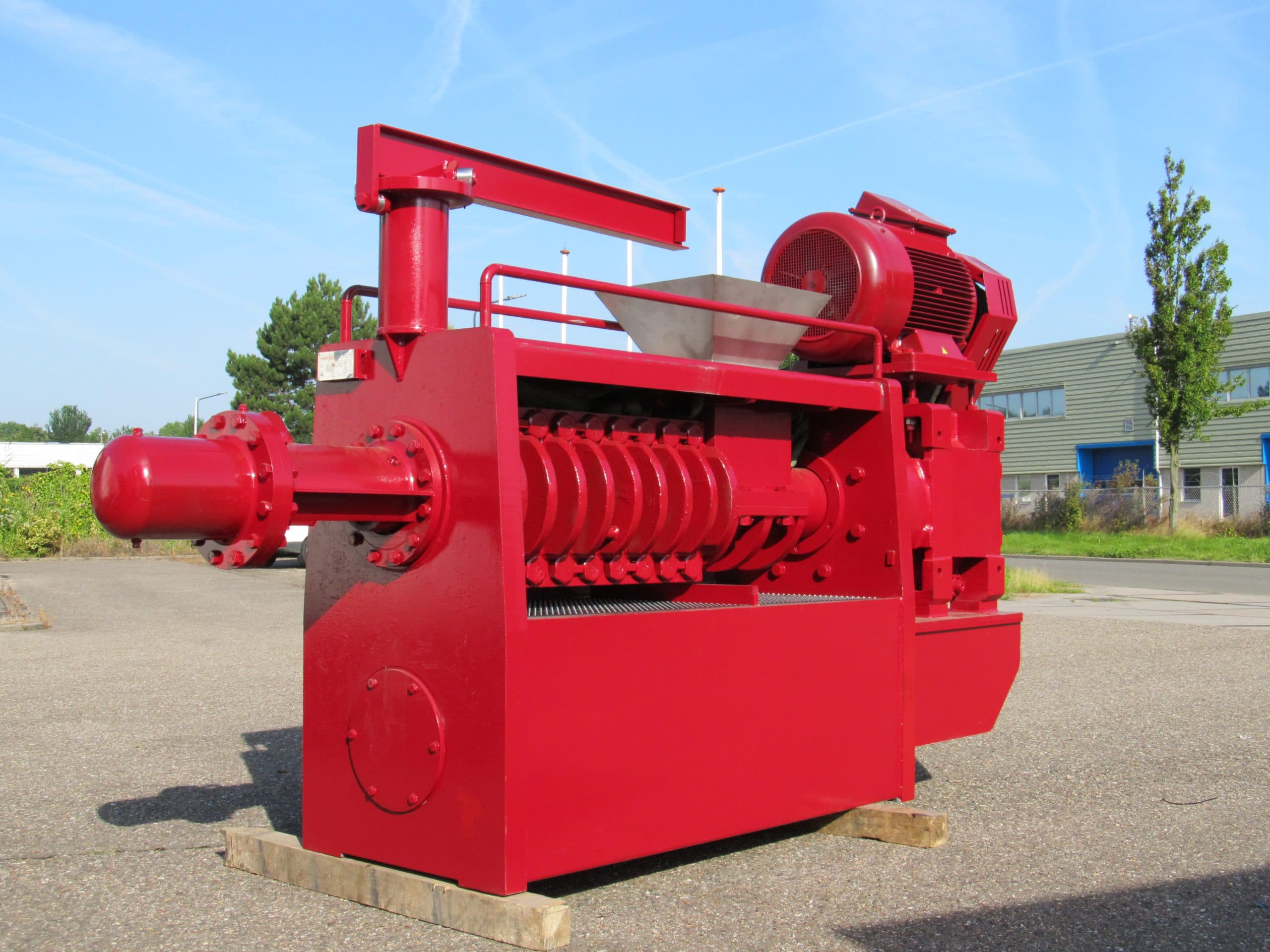Home 


After processing meat, bones and offal, the solid fraction of the product still contains fats, which can be removed by defatting.
1. Most of the water is evaporated, in the drying process. The dried product is transferred from the batch drying process for further separation of fats/oil and solids.
2. Depending on the product, the product can be drained by an inclined conveyor.
3. The drained product is conveyed to the Fat Press for further defatting and to discharge the defatted meal (crackling). Defatting is achieved by applying mechanical pressure to the cooked product.
4. The pressed fats, still containing small amounts of solids, will be handled in the Fat Handling section.
1. Most of the water is evaporated, in the drying section. The dried product is transferred from the continuous drying process for further separation.
2. First the free fats will be drained by an drainer/sedimenter.
3. The drained product is conveyed to the Fat Press for further defatting and to discharge the defatted meal (crackling). Defatting is achieved by applying mechanical pressure to the cooked product.
4. The pressed fats, still containing small amounts of solids, will be handled in the Fat Handling section.
